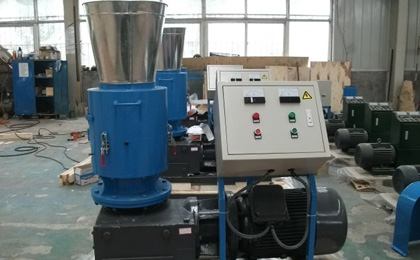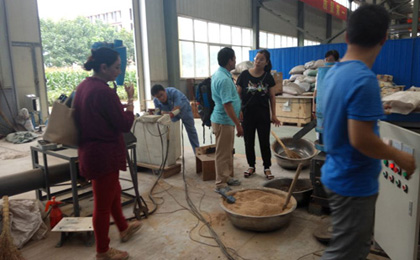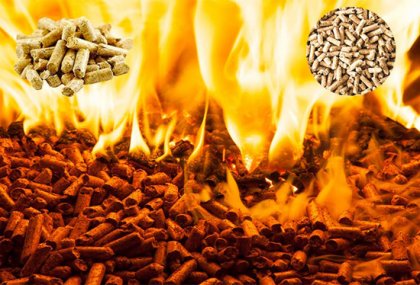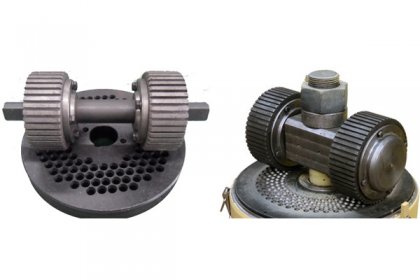Overview of biomass pellets
According to the statistics, some developed countries, like America, Sweden and Austria, the application of biomass pellets take up about 4 percent, 16 percent and 10 percent respectively of the disposable energy consumption. In America, the total installed gross capacity of biomass energy generation is up to ten thousand MW, about 10 to 25MW for unit capacity. What’s more, it is very common and popular for ordinary family to use biomass pellets as fuels of their stoves.
So we say that biomass pellets change the life of ordinary people. Thanks to the advanced technology of developed countries, our expert and artisans research and design the biomass pellet machines on the basis of fully research on the combustion dynamics characteristics of biomass pellet fuels, and find that the biomass pellets have high volatile content and low ignition point so that they produced biomass pellet machines to process raw materials into biomass pellets.
When burning biomass pellets, there is almost no ash, no smoke due to the complete burning, which supplies such a kind of consumption style of environmental friendly, economic, safe and green for the life energy and industrial energy not only in the city but also in the rural. So burning biomass pellets is suitable for the kitchen work or heating in the rural.
After the harvest of crops, farmers usually sell the remaining crop stalks, rice husks, and agricultural and forestry waste, animal manure and energy crops to some manufacturers of pellet machines, and they process those raw materials into biomass pellets through the different pellet machines to be used as biofuels or other applications, to realize turn waste into treasure and save energy and protect the environment.

Profits of enterprises
Generally speaking, biomass pellets are produced by the pellet machines, to process all kinds of biomass straw, stalks and other wastes from farmland, through the procedures of crushing, pelletizing, drying, packing and so on, then sell the biomass pellets to people who need them for heating. For example, if an enterprise can produce 10 ton biomass pellets per day, then the annual output can reach 3600 ton, we can make a hypothesis that the recovery price of stalk is 0.2 yuan per kilo, while the price of the biomass pellets is 0.5 yuan per kilo, so the net margin of per kilo biomass pellet is about 0.1 yuan, take out the fees for electric, salary of workmen, depreciation of equipment and so on, the average profit per kilogram biomass pellets is 0.1 yuan, and the annual net profit can reach 3.6 million yuan.
Profits of users
The overall efficiency of the traditional stove in rural is about 12 percent to 15 percent, this is because the fuel can’t be burned completely, so there is big smoke, low firepower. But if use biomass pellets as fuels, the efficiency can up to 30 percent to 40 percent, and at the same time can save the twice or three times as much raw materials.
For general family, only 4 to 5 kilograms biomass pellets are enough for the daily needs, can improve the living conditions of farmers, and keep the kitchen maintain a clean and hygienic environment. If biomass pellets are popularized in the countryside, the emissions of smoke and dust will be reduced about 90 percent, which can purify the air and has remarkable environmental benefit.
Features of biomass pellets
- The main pollutants are smoke, so2, NOx and CO when burning biomass pellets, but the amount is very small. Generally, the raw materials are corn stalk, wheat straw, peanut shell, corncob, cotton stem, soybean pole, weeds, branches, leaves, sawdust, bark, etc. Through the biomass pellet machines, these raw materials can be processed into biomass pellets with the procedures of crashing, pelletizing, drying, packing and so on.
- The density of the raw materials is about 130 kg/m3, but for the biomass pellets, the density is more than 1.1 to 1.3 t/m3, the calorific value is 4500-4800kcal/kg, they are cylindrical type with diameter of 4-12mm and length of 10-20mm, less than 8 percent moisture content, less than or equal to 2 percent ash, more than 98 percent combustion ratio.
So biomass pellets have the advantages of high burning resistance, high calorific value, convenient use, clean and sanitary, etc. It can replace firewood, raw coal and so on. It can be widely used in heating, living stoves, hot water boilers, industrial boilers, biomass power plants, etc., and can also be used to produce biogas, make fertilizer, feed, etc.






